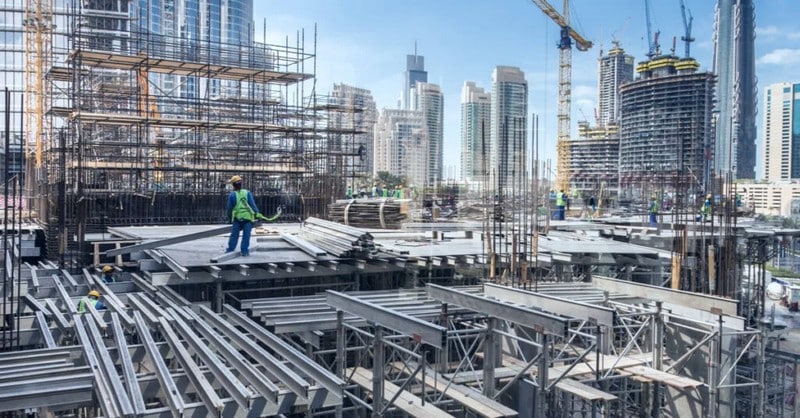
If you strip a building down to its bones, what’s left is metal. Steel beams, aluminum panels, copper pipes — the quiet heroes holding up the modern world. Yet lately, those same materials have become a bit of a wildcard. Delays, shortages, unpredictable pricing — you name it. And the thing is, most of it doesn’t start on the construction site at all; it begins deep in a chain of mines, factories, ships, and suppliers that most people never see. Reports like the state of the metals industry supply chain have laid it bare: the system that moves these materials around is under serious strain, and it’s changing faster than many builders can keep up with.
Construction has always relied on a steady flow of reliable materials, but that assumption is cracking. The shocks of recent years — from global shutdowns to transport logjams — have exposed how fragile these metal supply chains really are. Yet out of the mess, four major shifts have started to take shape. They’re not theoretical trends buried in some whitepaper either; they’re happening now, reshaping how developers, architects, and logistics partners plan every new build.
1. Regionalization Is Quietly Redefining “Local”
You used to hear people say “steel is steel, doesn’t matter where it comes from.” That’s not true anymore. Builders have been burned too many times by long-distance dependencies — ships delayed at port, materials stuck behind new tariffs, or batches that don’t meet updated local standards. So, more firms are looking inward. They’re choosing suppliers closer to home, even when it costs more.
It’s not just a matter of nationalism; it’s practicality. Domestic mills and micro-plants are popping up near urban centers to meet rising construction demand without relying on overseas imports. The upside? Faster turnaround, easier communication, and less risk when politics or shipping prices go haywire. The downside? Well, sometimes local means pricier — energy costs, labor rates, and limited capacity can drive up bids. Still, ask most project managers and they’ll tell you: paying a bit extra beats waiting three months for a shipment that may never arrive.
2. Tech Is Making the Supply Chain (Finally) Predictable
There’s something almost poetic about seeing centuries-old industries like steel manufacturing start to embrace digital tools. Artificial intelligence, predictive logistics, and tracking platforms are no longer buzzwords — they’re lifelines. When a lorry full of rebar leaves a depot now, project managers can see exactly where it is, how fast it’s moving, and even predict when it’ll hit traffic.
This new layer of transparency is changing how construction teams plan. No more guesswork. By tying real-time logistics data into BIM models, architects can line up deliveries with on-site progress, reducing clutter and downtime. It’s a subtle shift, but it adds up to major savings in time and stress. And yes, it even improves safety — fewer last-minute scrambles mean better planning for a proper safety setup, especially when cranes or scaffolding crews are involved.
For years, builders have worked around the chaos. Now, for once, they can actually get ahead of it.
3. The Push for Sustainability Is No Longer Optional
Here’s the uncomfortable truth: metals are essential to construction but also some of the dirtiest to produce. That’s why the conversation has shifted from convenience to conscience. With governments and corporations chasing carbon zero targets, the metals industry is being forced to reinvent itself — from mining to smelting to final use.
Recycled steel and aluminum are becoming the new gold standard. Developers want materials with traceable origins and verified emissions data. Some forward-thinking architects are even designing for disassembly — meaning buildings that can be taken apart decades later so the materials can be reused. It’s all part of a “circular” mindset: waste less, recover more, and treat metal not as disposable, but as permanent infrastructure.
Of course, there’s friction. Recycled materials aren’t always uniform, and traceability systems add paperwork and cost. But the trend is irreversible. Construction firms that resist the shift will soon find themselves out of step with regulations, investors, and, frankly, clients who care where their materials come from.
4. Living With (and Planning For) Price Volatility
Ask any developer what keeps them awake at night and they’ll likely say the same thing: metal prices. One month you’re quoting a project with affordable steel, the next month costs have jumped 20%. Copper, aluminum, and nickel all follow their own strange rhythms — part economics, part geopolitics, part chaos.
In 2024, global steel prices rose by nearly 25% compared to pre-pandemic averages, while copper hovered around its highest levels in over a decade — clear signs that volatility isn’t going anywhere.
The smart players are learning to roll with it. Instead of hoping for stability, they build flexibility into contracts and designs. Some pre-buy materials when prices dip; others partner directly with mills or distributors to lock in supply. A few are even experimenting with hybrids — mixing metal with engineered timber or composites — to take pressure off volatile commodities.
It’s not about eliminating risk (that’s impossible); it’s about resilience. With better forecasting tools, developers can spot trends before they bite. And when prices inevitably swing, the ones who planned for turbulence stay standing.
The Bottom Line
If there’s a single thread running through all these changes, it’s this: resilience. The global construction sector is being forced to grow up fast. It’s no longer enough to just pick the cheapest supplier or the quickest shipping option and hope for the best. Every decision — what to build with, who to buy from, how to plan the timeline — ties back to the health of the wider supply chain.
So, while it might not sound glamorous, keeping a pulse on the bigger picture is now part of the architect’s toolkit. The future of construction depends on designers, suppliers, and builders working not in isolation but as part of one shared, intelligent network.
And maybe that’s what will define the next generation of buildings: not just how strong or beautiful they are, but how well their materials moved through the world before ever setting foot on site.








